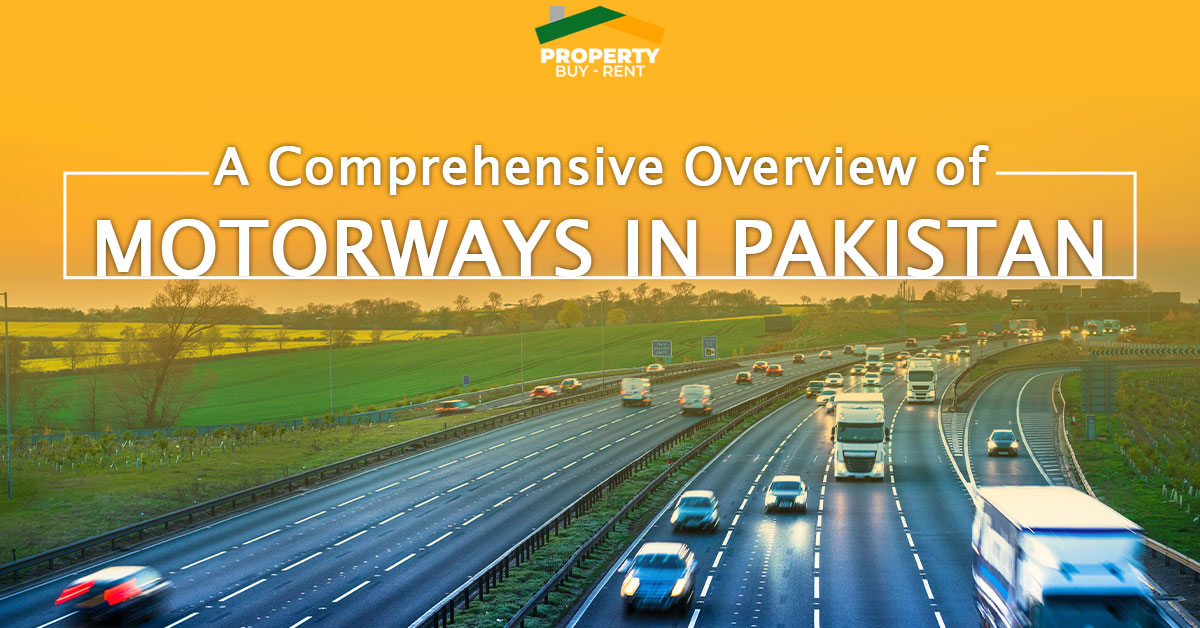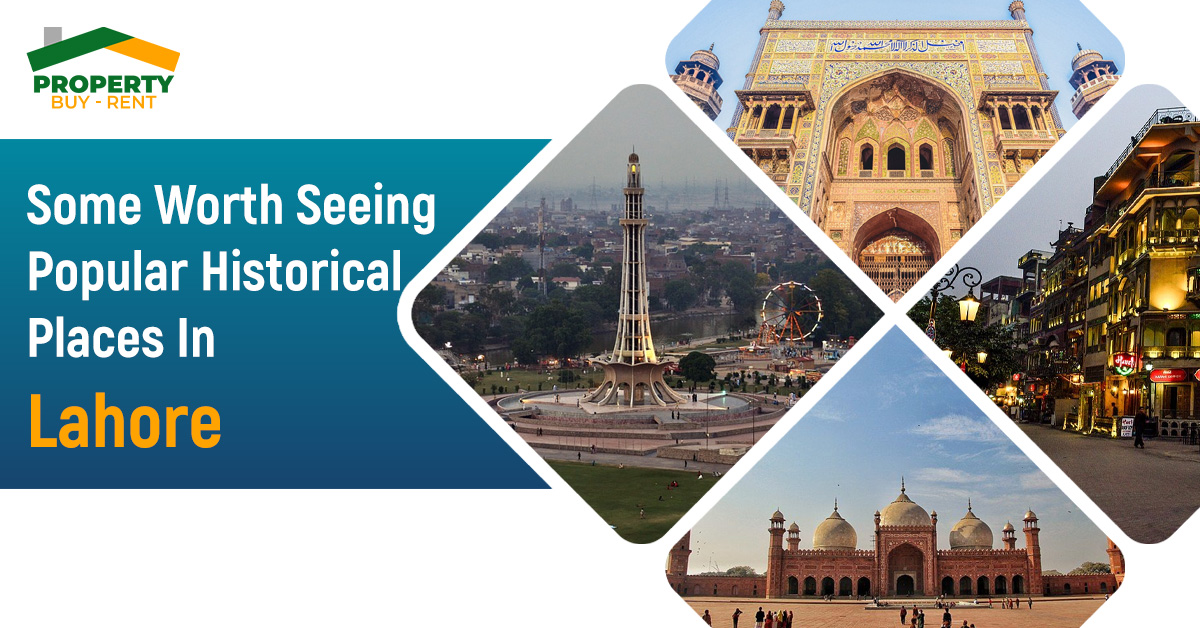Motorways in Pakistan are 8-lane, high-speed roads (with at least 3 lanes in each direction). They have been constructed as part of a program to construct an extensive network of highways and motorways throughout the country, which will connect major cities and ports and enable economic expansion.
Motorways in Pakistan, numbered and signed as the M-x (where x is 1 to 8), are divided-access, limited-access highways. Although the majority of Pakistan’s highways are part of the Asian Highway Network, some have been officially designated as motorways in their own right.
List Of All Motorways In Pakistan
Pakistan has some of the most beautiful and largest roads for travelling purposes. We are giving you a complete list of all Motorways that are present in Pakistan with their numbers and cities linked to them so that you can easily travel from one city to another through them.
Currently, the total length of all motorways of Pakistan is 2,567 km (1,595 mi). The motorways department was formed in 1997 during President Pervez Musharraf’s rule. This department is currently maintained by National Highway Authority (NHA). All the National Highways, Motorways and Strategic roads are under the jurisdiction of the National Highway Authority.
Here is the list of all motorways in Pakistan.
M-1 motorway Peshawar–Islamabad
The M-1 Motorway or the Islamabad–Peshawar Motorway is an east-west motorway in Pakistan. It connects Peshawar to Islamabad–Rawalpindi. The total length of this motorway is 155 km of which 88 km is in Khyber Pakhtunkhwa and 67 km in Punjab. President Pervez Musharraf constructed the motorway during his rule at a cost of Rs. 13 billion, which opened in October 2007.
There is a total of 6 lanes in the whole stretch of the M-1. Peshawar-Islamabad Motorway has a total of 14 interchanges – at Airport Link Road, Islamabad, AWT/ Sanjiani/ Paswal, Burma Bhatar, Burhan (Hassan Abadal/ Kamra), Hazara Expressway (E-35), Ghazi, Chachh, Sawabi, Rashakai, Charsadda, the Peshawar Northern Bypass and Peshawar Ring Road.
Dera Ismail Khan is now accessible via the Brahma Bahtar-Yarik Motorway that began at the Brahma Bahtar Interchange. There are a total of 10 service areas along the route (five on each side of the motorway). On the route along the Haro, Indus, and Kabul rivers, there are 3 major bridges, 18 flyovers, 27 small bridges, 137 underpasses, and 571 culverts.
M-2 motorway Islamabad–Lahore
Lahore-Islamabad Motorway or M-2 is a north-south motorway in Pakistan that connects Rawalpindi/Islamabad with Lahore. It is the first motorway built in South Asia and is 375 km long, entirely in Punjab. As it continues, it eventually becomes the M-1 Motorway, which ends in Peshawar.
The M-2 was an idea conceived by Prime Minister Nawaz Sharif during his first term (1990-1993). The contract was awarded to M/s Daewoo Corporation of South Korea on 30 December 1991 at a cost of Rs. 23.686 billion on a design-cum-construct basis. The original contract was for a four-lane facility. The motorway was inaugurated on November 26, 1997, during Sharif’s second term.
In late 2006, upgrades were made to the portion of the Lahore-Islamabad Motorway passing through the Salt Range due to increasing complaints of drivers. There are 10 service and rest areas on both sides of the whole motorway, having facilities of Insta-Carwash, Insta-car repair, Insta-fueling, and fast-food restaurants such as McDonald’s, KFC, and Gloria Jean’s Coffees among others.
M-3 motorway Lahore–Abdul Hakeem
M-3 is a 6 lane controlled-access motorway in Pakistan that connects the northern end of the M-2 to the southern end of the M-4 near Abdul Hakeem. Taking the eastern route from Lahore to Abdul Hakeem city, the M-3 motorway is parallel to the M-4 motorway, which links M-2 to the same Abdul Hakeem city. According to the official website of the National Highway Authority, the distance from Lahore to Multan via N5 is 323 km
After passing through the famous Ravi Toll Plaza in Lahore, the M-3 Motorway joins the M-2 Motorway. From Lahore, it then runs southwest until it meets the M-4 motorway near a small town named Darkhana, just north of Abdul Hakim.
M-3 Motorway has 3 rest areas along the route. ‘Lahore to Abdul Hakeem’ section of M-3 was inaugurated on 30 March 2019 and officially opened to traffic on 1 April 2019 on the entire route between Lahore and Abdul Hakeem.
M-4 motorway Pindi Bhattian–Multan
Faisalabad and Multan are connected by the M4 motorway, a north-south route. The total length of the Pindi Bhattian-Multan motorway is 309 km. This motorway also connects to the M2, M3 and M5 motorways. The M4 Motorway was intended to link Faisalabad and Multan as part of Pakistan’s Motorway Network. Pervez Musharraf, Pakistan’s then-president, performed the groundbreaking ceremony for the project in 2007.
The M4 begins close to the Pindi Bhattian Interchange on the M2 and journeys southwest to connect Faisalabad, Gojra, Toba Tek Singh, Shorkot, Abdul Hakeem, Khanewal, and Multan. The M5 Multan-Sukkur Motorway ends at Sher Shah Interchange, giving access to Multan Cantt over Shujabaad Road & itself continues as M5.
M-5 motorway Multan–Sukkur
Multan-Sukkur Motorway, also known as M5, is a north-south highway in Pakistan. China-Pakistan Economic Corridor (CPEC) built this motorway, which extends for 392 km and has six lanes. An estimated $2.94 billion was spent on the Sukkur – Multan Motorway (M-5), with most of the financing coming from Chinese state-owned banks.
The Chinese government provided 90% of the project’s budget through concessionary loans at a 1.6% interest rate, while Pakistan funded the remaining 10%. In July 2014, the Multan-Sukkur Motorway (M-5) was approved.
On 6 May 2016, former Prime Minister Mian Muhammad Nawaz Sharif inaugurated the motorway after it was awarded to China State Construction Engineering. Construction is expected to be completed in August 2019. In August 2016, actual groundbreaking began. The M5 Motorway forms an integral part of the China-Pakistan Economic Corridor.
M-6 motorway Sukkur-Hyderabad
A motorway project known as M6 has been pending in Pakistan since 2016. There will be a connection between Sukkur and Hyderabad via M-6. In terms of North-South connectivity, the 306 km long M-6 highway is the only vital link, which connects Karachi and Peshawar. Approximately $1.7 billion will be spent on the construction of the M-6 highway. In addition to 89 bridges, 15 interchanges, and 243 underpasses, the M-6 will have a design speed of 120 km/h.
It is projected that this 296 km long motorway will be complete in 29 months. Following a bidding process in May 2017, China State Construction Engineering won the contract, with construction expected to begin in August 2017 and be completed by December 2019. It is still unclear when construction will begin on the 296-km stretch of the Karachi-Lahore motorway.
M-7 motorway Dadu–Hub
The M7 is an upcoming motorway between Dadu and Hub. In about 540 kilometres, the highway forms the southernmost part of the north-south route from Islamabad to Karachi.
From Multan, the M6 merges into the M7 while crossing the M8, the highway that leads to Gwadar across the border with Iran, at the town of Ratodero (near Sukkur). There are several cities that are served by the M7, including Larkana. The M7 runs along the river Indus in the south. This last route, however, passes through the Kirthar Range, a low mountain range.
M-8 motorway Ratodero–Gwadar
The M-8 motorway in Pakistan runs from Sukkur- Larkana to Gwadar, connecting the east and west. In addition to the 193 km between Gwadar and Hoshab, the motorway is partially under construction. Because of the difficult terrain on which the motorway is being constructed, a completion date for the road is not known.
The Ratodero Gwadar Motorway (M-8) will run from Ratodero in Sindh to the Makran Coastal Highway near Gwadar, then pass through Khuzdar, Awaran, Hoshab, and Turbat before joining the Makran Coastal Highway.
In Balochistan Province, the M8 crosses the Dasht River and passes near the Mirani Dam. There will be four lanes and a total length of 892 km on the M8. In the beginning, 2 lanes will be constructed, then another 2 lanes will be added, making a total of 4 lanes.
M-9 motorway Hyderabad–Karachi
Karachi-Hyderabad Motorway or M-9 is a 136-km long 6-lane highway connecting Hyderabad and Karachi in the Sindh province of Pakistan. The M-9 is an upgraded version of the former Karachi-Hyderabad Super Highway, which added an extra lane on each side and was resurfaced.
Construction of the M-9 Motorway began on 11 March 2015, with a completion date of August 2017; however, the deadline slipped, and the ceremony was rescheduled for April 2018.
M-10 motorway Karachi Northern Bypass
Karachi Northern Bypass (M-10), also called the Karachi Motorway, is a 2-lane road in Karachi. The motorway is connected to the Karachi Port via this tunnel, giving transporters and commuters direct access to the Karachi port without having to enter the main arteries of the city.
North of Karachi, the M10 begins at the end of Muhammad Ali Jinnah Road at the intersection of M9, which it connects to via a Trumpet interchange. Following this, it continues north for a few kilometres before turning west where it forms a junction with the N25. The highway eventually returns to Karachi after this interchange, merging onto the KPT flyover at Karachi Port.
M-11 motorway Lahore–Sialkot
Located in Punjab, Pakistan, the Sialkot-Lahore Motorway (M11) runs north-south from Sialkot to Lahore, passing through the eastern part of Punjab. The motorway has a total length of 103 km. It was opened on 18 March 2020 at the cost of 44 billion rupees.
By using this route, the travel time between Sialkot and Lahore was slashed from 2 hours to just 50 minutes instead of the alternative route via the N-5, consisting of 145 kilometres. The road will increase Sialkot’s economy as well as that of its surrounding rural hinterlands by offering express travel to Lahore and Sialkot airport junctions in one hour.
The motorway has 4 lanes, 9 interchanges, 8 flyovers, 20 bridges, and 18 underpasses. There would be established 3 industrial zones and 2 universities along with the project. By way of Lahore link road near Kala Shah Kaku, it is connected to M2 and N5. In parallel with the GT road, the route passes through Kamoki, Gujranwala, Daska, and ends at Sambrial.
M-12 motorway Sialkot – Kharian
Currently, under construction, the M12 Motorway (also known as Sialkot to Kharian Motorway) is expected to be completed by 2023. There will be four lanes on this highway.
M-13 motorway Kharian – Rawalpindi
Located from Kharian to Rawalpindi, the M12 Motorway is scheduled to open in the near future. There are four lanes and it covers a distance of 117KM. Construction is set to begin in 2023.
M-14 motorway Islamabad–D.I Khan
Pakistan’s M-14 Motorway, also known as Islamabad-Dera Ismail Khan Motorway and Hakla-Yarik Motorway, has four lanes running north-south. A 285-kilometre stretch of the motorway is part of the Western Alignment of the China-Pakistan Economic Corridor.
The highway provides high-speed road connections between Islamabad-Rawalpindi and the southern portions of Khyber Pakhtunkhwa province around Dera Ismail Khan. Initial plans called for the opening of the motorway at the end of 2018, however, due to delays, it opened on 5 January 2022.
M-15 motorway Hasan Abdal–Thakot
Located in Khyber Pakhtunkhwa, the Hazara Motorway is a 180-kilometer motorway linking Burhan Interchange near Hasan Abdal in Punjab province with Haripur, Havelian, Abbottabad, Mansehra, Shinkiari, Battagram, and Thakot in Khyber Pakhtunkhwa.
M-16 motorway Swabi – Chakdara
A 160 km (99 mi) four-lane motorway in the Khyber Pakhtunkhwa province of Pakistan, the Swat Motorway is also known as the Swat Expressway. As part of phase one of the project, completed in June 2019, a motorway will be built linking Nowshera and Chakdara, while phase two will connect Nowshera and Fatehpur.



